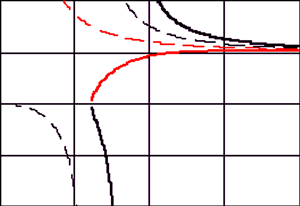Velocity of energy characteristics of electromagnetic waves emitted by Hertz dipole excited by Gaussian pulse
DOI:
https://doi.org/10.3103/S0735272721070025Keywords:
Hertz dipole, Gaussian pulse, velocity of Poynting vector, velocity of energy density, radian surfaceAbstract
The analysis of the velocity of the Poynting vector and the energy density of electromagnetic waves emitted by the Hertz dipole excited by the Gaussian pulse are performed analyzing the motion of causal and extreme surfaces. The study of these characteristics opens up the possibilities of velocity determination of individual parts of pulses, such as slopes, not just causal surfaces. The mathematically confirmed view of pulse narrowing or widening, its shape changes, the ratio of pulse velocity to the light velocity c, is formulated based on the lack of energy transfer through the causal surface. We show that the electromagnetic wave of the Hertz dipole moves with the light velocity c only at large distances from the source, asymptotically approaching c. Due to this study we may say that “light velocity c is the velocity of an electromagnetic wave in a vacuum at long distances from the source.” This additive “at long distances from the source” is not important for light waves with a micrometric wavelength, but it is important from a natural and conceptual point of view and for radio waves. The obtained results shed light on physical processes near the Hertz dipole, that have no explanation due to the lack of information about the directions and velocities of the Poynting vector and the energy density of electromagnetic waves near the dipole.
References
J. C. Maxwell, A Treatise on Electricity and Magnetism. Cambridge: Cambridge University Press, 2010, doi: https://doi.org/10.1017/CBO9780511709333.
H. Hertz, Of Finite Velocity of Propagation of Electromagnetic Action. Sitzungsber: D. Berl. Akad. D. Wiss., 1888.
V. I. Naidenko, “Evolution of electromagnetic waves radiated by a Hertzian dipole,” in 2011 VIII International Conference on Antenna Theory and Techniques, 2011, pp. 63–68, doi: https://doi.org/10.1109/ICATT.2011.6170714.
H. G. Schantz, “The flow of electromagnetic energy around electric dipole,” Am. J. Phys., vol. 63, no. 6, pp. 513–520, 1995.
H. G. Schantz, “Electromagnetic energy around Hertzian dipoles,” IEEE Antennas Propag. Mag., vol. 43, no. 2, pp. 50–62, 2001, doi: https://doi.org/10.1109/74.924604.
H. G. Schantz, The Art and Science of Ultrawaveband Antennas. London: Artech House, 2005.
C. A. Balanis, Antenna Theory: Analysis and Design. New Jersey: Wiley, 2016, uri: https://www.wiley.com/en-us/Antenna+Theory%3A+Analysis+and+Design%2C+4th+Edition-p-9781118642061.
V. Naydenko, “Velocity of the fields radiated Hertz dipole excited by Gaussian pulse,” in 2020 IEEE Ukrainian Microwave Week (UkrMW), 2020, pp. 154–160, doi: https://doi.org/10.1109/UkrMW49653.2020.9252662.
M. Manteghi, “Fundamental limits, bandwidth, and information rate of electrically small antennas: Increasing the throughput of an antenna without violating the thermodynamic Q-factor,” IEEE Antennas Propag. Mag., vol. 61, no. 3, pp. 14–26, 2019, doi: https://doi.org/10.1109/MAP.2019.2907892.
P. Nepa, A. Buffi, “Near-field-focused microwave antennas: Near-field shaping and implementation,” IEEE Antennas Propag. Mag., vol. 59, no. 3, pp. 42–53, 2017, doi: https://doi.org/10.1109/MAP.2017.2686118.
O. Dumin, O. Pryshchenko, V. Plakhtii, G. Pochanin, “Landmine detection and classification using UWB antenna system and ANN analysis,” in 2020 IEEE Ukrainian Microwave Week (UkrMW), 2020, pp. 1030–1035, doi: https://doi.org/10.1109/UkrMW49653.2020.9252574.
M. Wagih, A. S. Weddell, S. Beeby, “Millimeter-wave power harvesting: A review,” IEEE Open J. Antennas Propag., vol. 1, pp. 560–578, 2020, doi: https://doi.org/10.1109/OJAP.2020.3028220.


